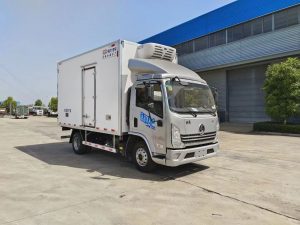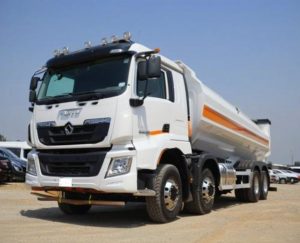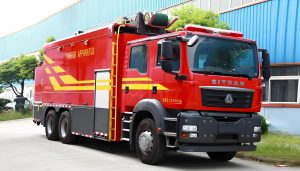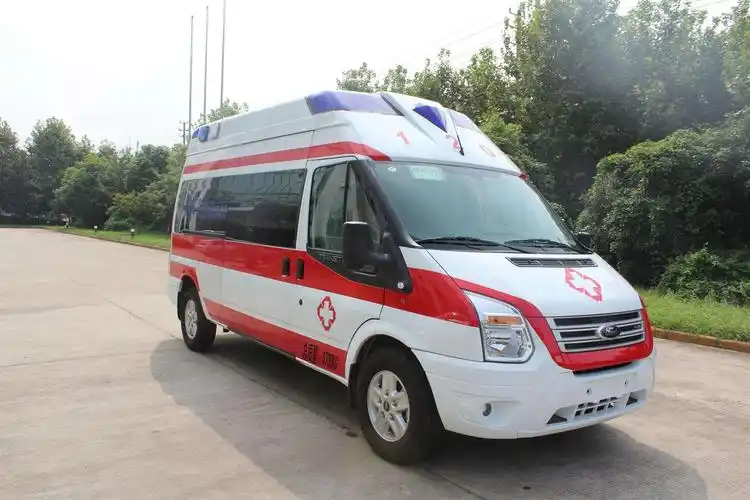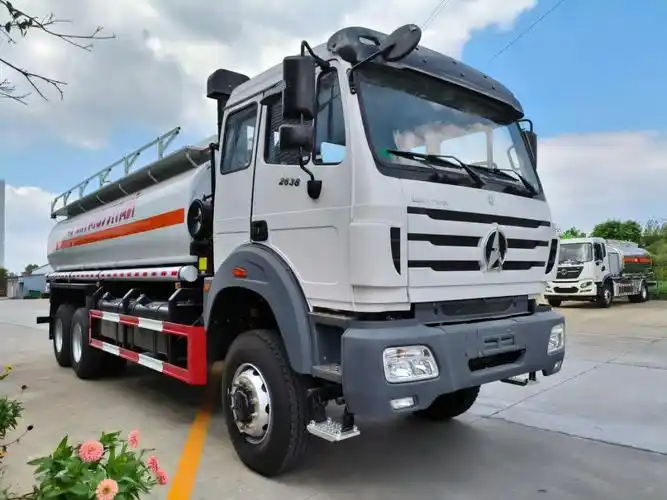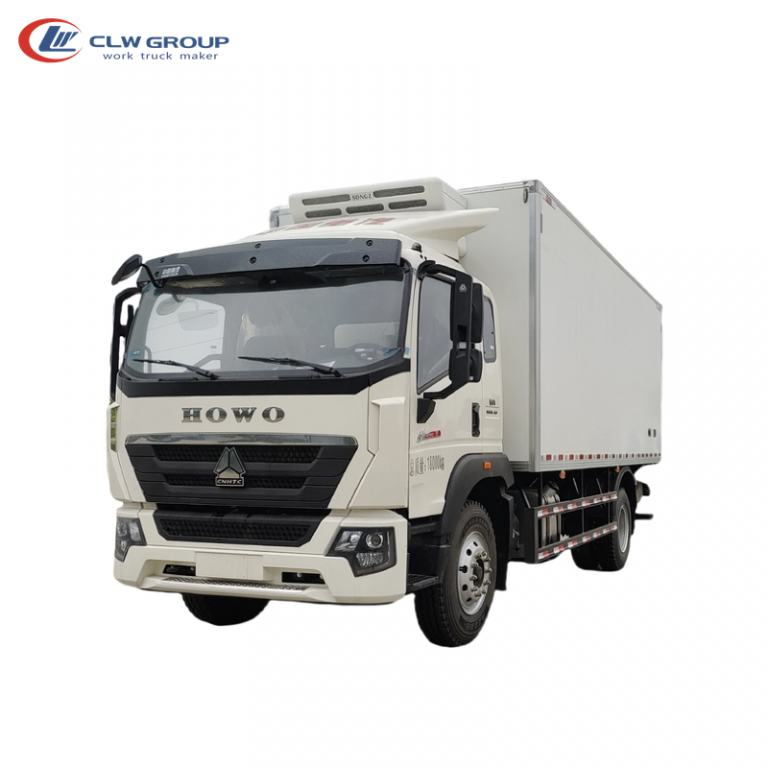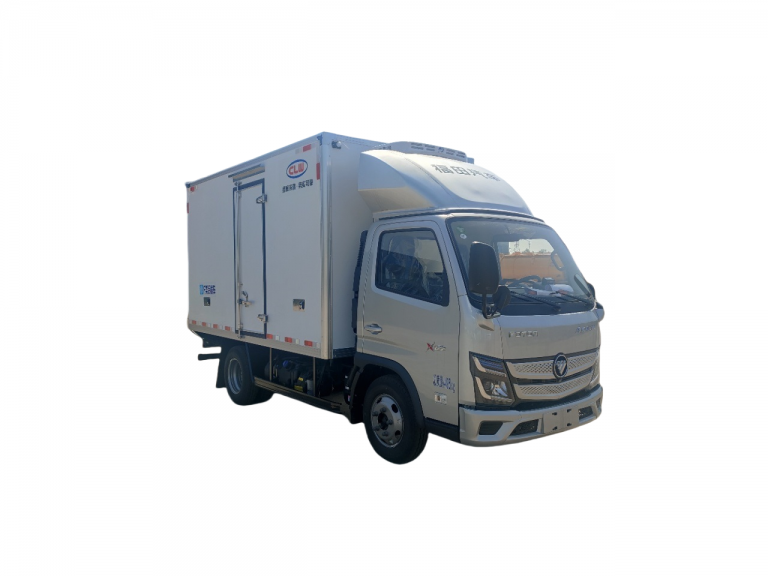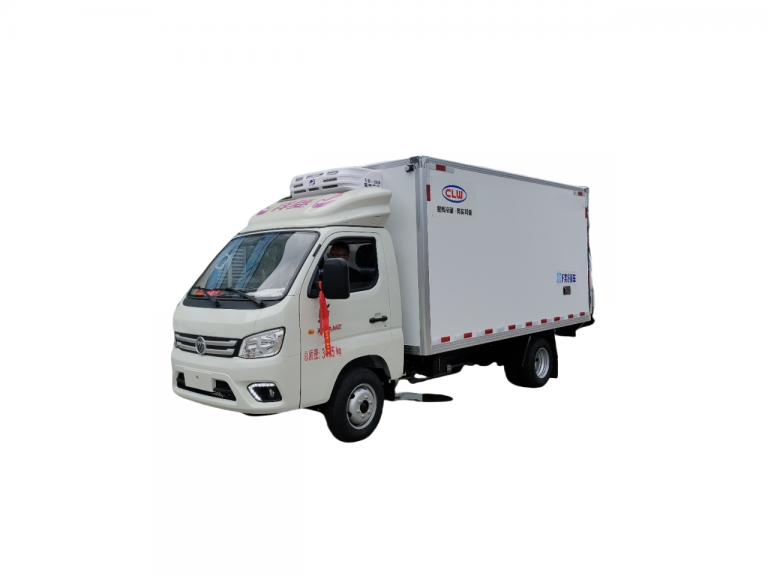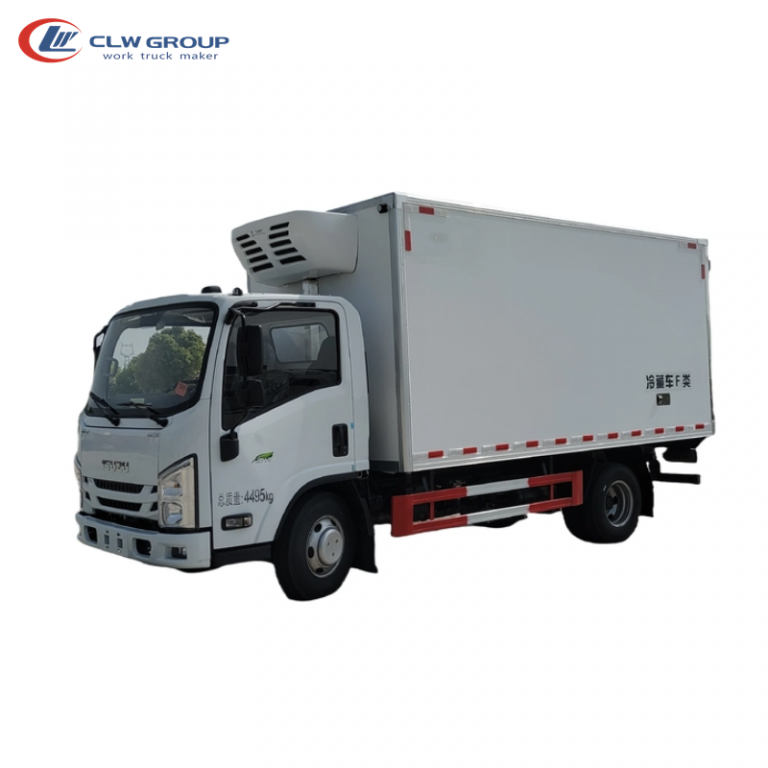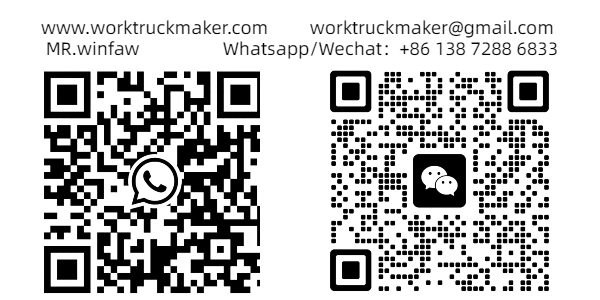Table of Contents
ToggleIntroduction
Ever wondered what those massive trucks with crane-like arms are doing at construction sites? They’re called boom trucks, and they are an absolute game-changer in various industries. If you’re considering adding one to your fleet, or even making your first purchase, this guide will help you navigate the ins and outs of finding the perfect boom truck for sale.
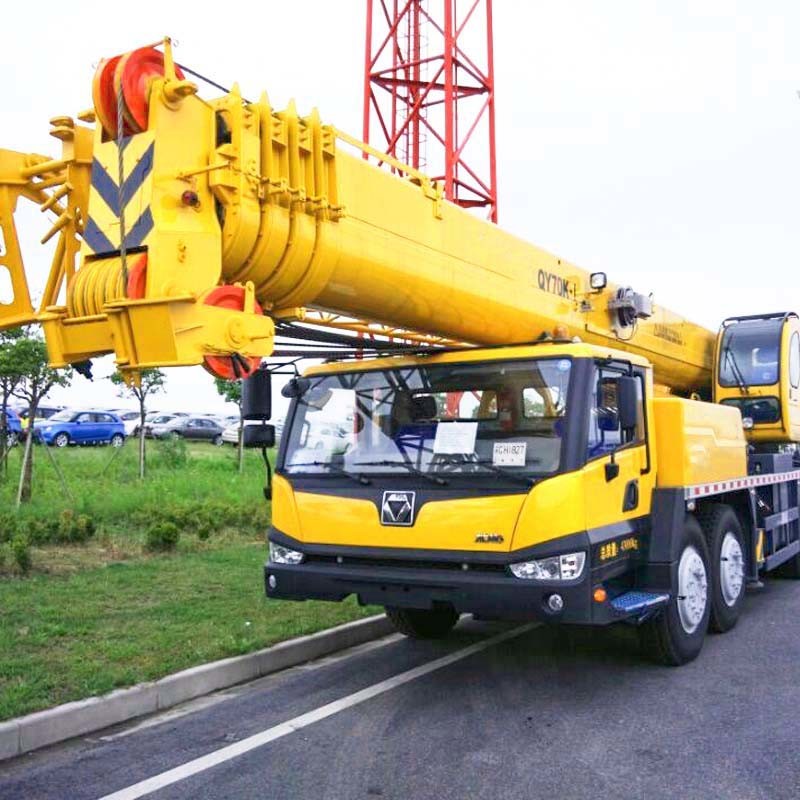
What is a Boom Truck?
A boom truck is essentially a truck equipped with a hydraulic crane, known as the “boom.” This piece of machinery is indispensable in lifting heavy materials, making it crucial in industries like construction, utilities, and even tree services. The boom itself can either be a telescopic arm that extends straight out or an articulating arm that has joints allowing it to bend and move in various directions.
Importance and Uses of Boom Trucks
Why are boom trucks so important? Imagine trying to lift a massive steel beam with just manpower – not very efficient, right? Boom trucks make such tasks not only possible but also much safer and quicker. They can handle everything from placing utility poles to hoisting large HVAC units onto rooftops. These versatile machines are invaluable in scenarios where heavy lifting and precision placement are required.
Types of Boom Trucks
Understanding the different types of boom trucks is essential before making a purchase. Each type comes with its own set of features and advantages, tailored to meet specific needs.
Telescopic Boom Trucks
Telescopic boom trucks feature a straight, extendable arm that can reach great heights. Ideal for tasks requiring high vertical reach, telescopic boom trucks are often seen at construction sites. These trucks are particularly useful for tasks that involve reaching high places, such as installing signage or maintaining tall structures. The telescopic boom can extend to significant lengths, providing excellent reach while maintaining stability and control.
Articulating Boom Trucks
Also known as knuckle-boom trucks, these have multiple sections that can bend or “articulate.” This flexibility allows them to maneuver around obstacles, making them perfect for more complex job sites. Articulating boom trucks are commonly used in urban environments where space is limited, and maneuverability is crucial. Their ability to bend and fold makes them ideal for tasks like tree trimming or electrical work in tight spaces.
Features to Look for When Buying a Boom Truck
When you’re on the hunt for a boom truck, certain features should be on your radar. These features not only ensure that the truck meets your specific needs but also contribute to the overall safety and efficiency of your operations.
Engine Power
The engine is the heart of any vehicle, and boom trucks are no exception. Ensure the truck has enough horsepower to handle your specific tasks. A powerful engine provides the necessary force to lift heavy loads and operate the boom smoothly. Additionally, consider fuel efficiency and emissions standards, as these factors can impact both operational costs and environmental sustainability.
Lift Capacity
This determines how much weight the boom truck can safely lift. Always choose a model that meets or exceeds your project requirements. Lift capacity is a critical factor, as overloading the boom can lead to accidents and equipment damage. Ensure that the truck’s lift capacity aligns with the heaviest loads you anticipate handling.
Reach and Height
Different jobs require different reach capabilities. Make sure the boom truck you choose can extend to the heights you’ll need. The reach and height of the boom determine how high and how far you can lift materials. Consider the maximum working height and horizontal reach to ensure that the truck can handle your specific tasks without limitations.
Safety Features
Safety should always be a priority. Look for features like load moment indicators, outrigger stabilizers, and emergency shut-off systems. Load moment indicators help prevent overloading by providing real-time data on the load’s weight and position. Outrigger stabilizers enhance stability by extending support legs to balance the truck during lifts. Emergency shut-off systems allow operators to quickly stop operations in case of an emergency, preventing accidents and injuries.
Benefits of Owning a Boom Truck
Owning a boom truck comes with numerous advantages that make it a worthy investment. These benefits extend beyond mere convenience, offering tangible improvements in efficiency, productivity, and cost-effectiveness.
Versatility in Various Industries
Boom trucks aren’t just for construction; they’re used in tree trimming, electrical work, and even film production! Their adaptability makes them valuable assets across multiple sectors. For instance, utility companies use boom trucks to install and maintain power lines, while film crews rely on them for setting up lighting rigs and camera angles at elevated positions.
Efficiency and Productivity
Imagine completing a task in hours that would otherwise take days. That’s the kind of efficiency a boom truck brings to the table. By reducing manual labor and speeding up operations, boom trucks significantly enhance productivity. This increased efficiency translates to faster project completion times, allowing you to take on more projects and generate higher revenue.
Cost-Effectiveness
While the initial investment may seem steep, the long-term savings in labor costs and increased productivity make it worth every penny. By automating heavy lifting tasks, boom trucks reduce the need for manual labor, resulting in lower labor costs over time. Additionally, their ability to complete tasks quickly minimizes downtime and increases overall project profitability.
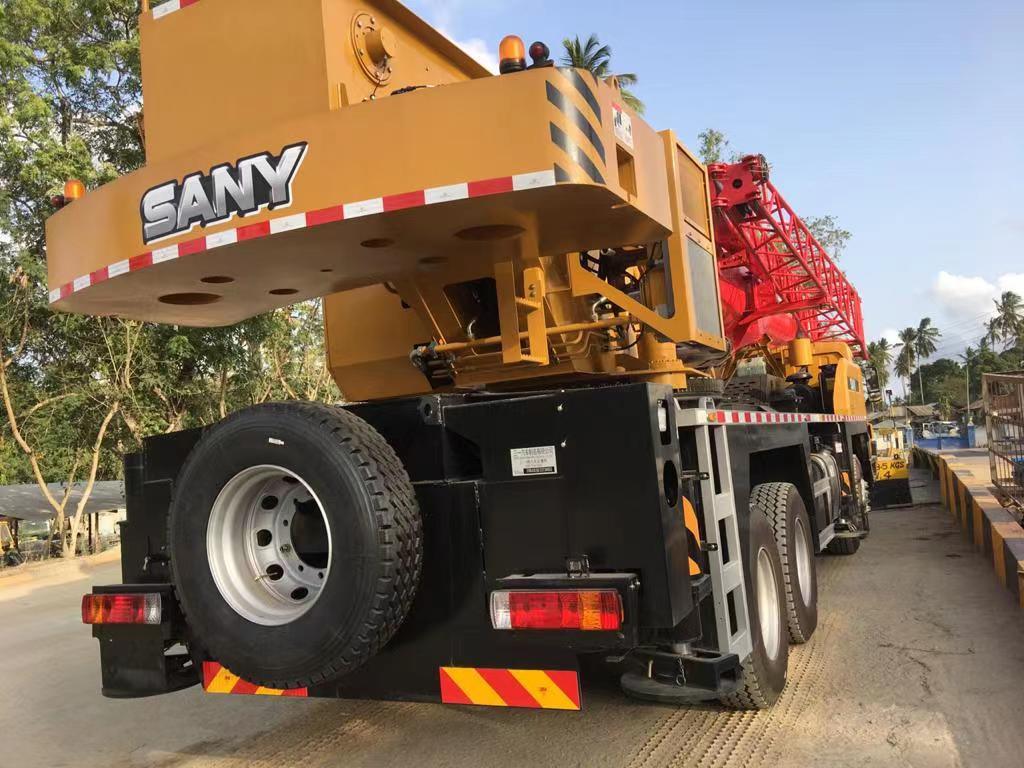
How to Choose the Right Boom Truck for Your Needs
Choosing the right boom truck can be daunting, but breaking it down into manageable steps can help. By considering factors such as project requirements, work environment, and budget, you can make an informed decision that meets your specific needs.
Assessing Your Project Requirements
Consider what you’ll be using the boom truck for. Are you lifting heavy materials? Need extensive reach? Identifying your needs will guide your decision. Start by listing the types of tasks you’ll be performing with the boom truck. For example, if you’re involved in construction, you may need a truck with high lift capacity and reach for placing beams or lifting heavy equipment. On the other hand, if you’re in tree services, an articulating boom truck with flexible maneuverability may be more suitable.
Considering the Terrain and Work Environment
Some boom trucks perform better on rough terrain, while others are suited for urban environments. Match the truck to your typical work setting. If your projects involve working on uneven or off-road terrain, look for boom trucks with robust suspension systems and off-road capabilities. Conversely, if you primarily operate in urban areas with limited space, opt for compact models with excellent maneuverability.
Budget Considerations
While it’s tempting to go for the biggest and best, stick to what you can afford without compromising on essential features. Determine your budget range and prioritize features based on your project requirements. Keep in mind that while higher-end models may offer advanced features, they may not always be necessary for your specific tasks. Strike a balance between functionality and cost-effectiveness to ensure you get the best value for your investment.
New vs. Used Boom Trucks
One of the most significant decisions you’ll face when purchasing a boom truck is whether to buy new or used. Each option has its own set of advantages and disadvantages that should be carefully considered.
Pros and Cons of New Boom Trucks
Pros
- Latest Technology: New boom trucks come equipped with the latest technological advancements, which can include improved safety features, better fuel efficiency, and more intuitive controls.
- Warranty: New trucks typically come with a manufacturer’s warranty, providing peace of mind and protection against defects and mechanical issues.
- Customization: When buying new, you often have the option to customize the truck to meet your specific needs, whether that means adding extra features or selecting a particular configuration.
Cons
- Higher Initial Cost: The most obvious downside is the higher upfront cost. New boom trucks can be quite expensive, which may be a barrier for some businesses.
- Depreciation: Like all vehicles, new boom trucks depreciate quickly. The moment you drive it off the lot, its value begins to decrease significantly.
Pros and Cons of Used Boom Trucks
Pros
- Lower Cost: Used boom trucks are generally much more affordable than their new counterparts, making them a more accessible option for many businesses.
- Slower Depreciation: Used trucks have already undergone their steepest depreciation, meaning their value will hold more steadily over time.
- Immediate Availability: When buying used, you can often find what you need without waiting for a custom build or specific model to become available.
Cons
- Higher Maintenance: Older trucks may require more frequent maintenance and repairs, which can add up over time.
- Limited Warranty: Used trucks may come with limited or no warranty, putting you at risk for out-of-pocket expenses if something goes wrong.
- Fewer Customization Options: You may have fewer choices in terms of features and configurations when buying used.
Where to Find Boom Trucks for Sale
Finding a boom truck isn’t as tricky as you might think. There are several avenues you can explore to locate the perfect truck for your needs.
Online Marketplaces
Websites like Machinery Trader and Equipment Trader list numerous options from various sellers. It’s convenient but requires careful vetting. Online marketplaces allow you to compare different models, prices, and features from the comfort of your office or home. However, it’s essential to do thorough research and possibly arrange for an inspection before making a purchase.
Local Dealerships
Visiting local dealerships allows you to inspect the truck firsthand. Plus, dealers often offer financing options. Dealerships can provide valuable insights and advice based on your specific needs. Additionally, they may offer service packages or maintenance plans that can be beneficial in the long run.
Auctions
Auctions can be a goldmine for bargains but come with risks. Always inspect the vehicle or have an expert do it before bidding. Auctions are an excellent way to find deals on both new and used boom trucks, but they require a keen eye and due diligence. Be prepared to act quickly, as auctions move fast and competition can be fierce.
Financing Options for Boom Trucks
Don’t let the price tag scare you away; several financing options can make purchasing easier.
Loans
Banks and financial institutions offer loans specifically for heavy machinery. Shop around for the best interest rates and terms. Securing a loan can help you spread the cost of the boom truck over several years, making it more manageable within your budget. Be sure to read the fine print and understand the total cost of the loan, including interest rates and fees.
Leasing
Leasing allows you to use the truck without committing to ownership. It’s a good option if you need the equipment for short-term projects. Leasing can be an attractive alternative for businesses that want to avoid the high upfront costs associated with purchasing new equipment. At the end of the lease term, you may have the option to buy the truck or return it and lease a newer model.
Payment Plans
Some sellers offer in-house financing with flexible payment plans. These can be easier to qualify for but might come with higher interest rates. Payment plans can provide a middle ground between loans and leasing, allowing you to make regular payments directly to the seller. Be sure to negotiate terms that work for your financial situation.
Maintenance Tips for Boom Trucks
Keeping your boom truck in tip-top shape ensures longevity and safety. Regular maintenance is crucial for optimal performance and minimizing downtime.
Regular Inspections
Regularly inspect all parts, especially hydraulic systems, for wear and tear. Routine inspections help identify potential issues before they become significant problems. Create a checklist that includes critical components such as the engine, hydraulic systems, tires, brakes, and electrical systems.
Cleaning and Lubrication
Keep the moving parts clean and well-lubricated to prevent rust and ensure smooth operation. Dirt and debris can cause wear on moving parts and lead to mechanical failures. Regularly clean and lubricate joints, gears, and other components to maintain efficiency and extend the lifespan of your boom truck.
Replacing Worn-Out Parts
Don’t ignore worn-out parts; replace them promptly to avoid bigger issues down the line. Keeping spare parts on hand can minimize downtime in case of unexpected failures. Establish a maintenance schedule that includes timely replacement of critical components based on manufacturer recommendations.
Conclusion
Investing in a boom truck can elevate your business to new heights—literally! By understanding what to look for, where to buy, and how to maintain your boom truck, you’re setting yourself up for success. So go ahead, take that leap (or should we say lift?) into greater efficiency and productivity!
Whether you’re considering new or used options, weighing financing plans, or learning about essential maintenance practices, this guide aims to provide comprehensive insights into every aspect of owning a boom truck. The benefits are clear: enhanced versatility, improved efficiency, and cost savings that can significantly impact your bottom line.
By following these guidelines and doing thorough research, you’ll be well-equipped to make an informed decision that aligns with your business goals and operational needs. Happy truck hunting!

